Garages tell stories. Whether a sheet-rocked, bare-bones suburban three-car or a rickety single-car workshop bursting with 50 years of accumulated parts and memorabilia, the space itself has something to say. The right garage is the perfect place to share a drink and a story. Like a flat-black Yamaha XS650 with straight bars, good rubber and a hot motor, it's an honest, hard-working place where spilled beer only adds to the atmosphere.
I've been dreaming about spaces for toolboxes, benches and bikes for most of the 30 years since my first Honda CT70, and finally built the garage of my dreams in 2004. I was single at the time, and it was heated, air-conditioned and larger than my small house. Some thought I was nuts, but my motorcycle friends understood.
Admitting that you ride a motorcycle amongst polite company generates a whiff of condescension. These garage owners remind us that motorcycle people either can't pick up those odors or just don't care. Motorcycle garages aren't always practical. Several rented warehouses full of motorcycles doesn't balance a budget. Working long hours in a small, dirty space so you have money left to go racing won't withstand careful cost-benefit analysis.
Conventional wisdom is a ruthless master. If you ride a motorcycle, you challenge that cultural dictator. And if you build a garage to house more than 100 motorcycles or keep one in your dining room, you flip conventional wisdom the bird.
Lee Klancher is the author of the forthcoming book, Motorcycle Dream Garages. Visit www.motorcycledreamgarage.com to learn more about the book, which can be purchased at Motorbooks.com, Amazon.com or your local bookstore.
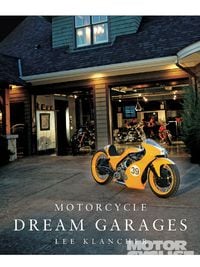
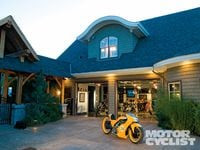
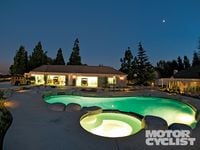
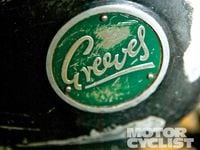
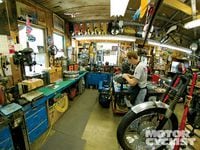
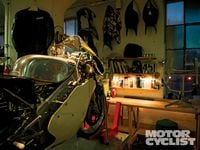
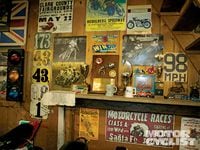
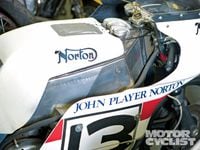
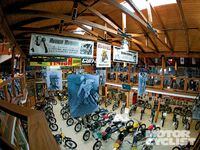
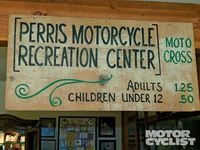
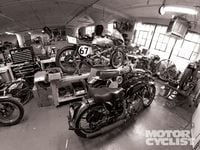
/cloudfront-us-east-1.images.arcpublishing.com/octane/4G5XKCDIHRCGRHVF7OPORG7ZX4.jpg)
/cloudfront-us-east-1.images.arcpublishing.com/octane/D2BDYKKNZ5GRHGDMI4PZTGRMME.jpg)

/cloudfront-us-east-1.images.arcpublishing.com/octane/UAY4WSZPOFDQRP4MCEXAKDFQOQ.jpg)

/cloudfront-us-east-1.images.arcpublishing.com/octane/X5CE3KSJHZHM5CUFGPZ7U26WB4.jpg)
/cloudfront-us-east-1.images.arcpublishing.com/octane/COWLTPGFAFGDDGJCTENYMA4VJM.jpg)
/cloudfront-us-east-1.images.arcpublishing.com/octane/H3PKUGPSUJFTND4RFPSI4OIDCE.jpg)
/cloudfront-us-east-1.images.arcpublishing.com/octane/UHGQA3MQDFCA3HLBWF7S76WH6Y.jpg)
/cloudfront-us-east-1.images.arcpublishing.com/octane/Q5EORCSTNFAVBJC4IYUHIKJTXQ.jpg)
/cloudfront-us-east-1.images.arcpublishing.com/octane/XIJ5FUFSP5A3NL7MOVZGJXAHC4.jpg)
/cloudfront-us-east-1.images.arcpublishing.com/octane/V5NZN3CGS5B5PPYFYJHIPAU5S4.jpg)
/cloudfront-us-east-1.images.arcpublishing.com/octane/CZE6ONOBU5E7HPIEEADU376C4M.jpg)
/cloudfront-us-east-1.images.arcpublishing.com/octane/UT4KL3SIYJBSPNHWJXTBE6MTGE.jpg)
/cloudfront-us-east-1.images.arcpublishing.com/octane/Q3UOIDZ22ZEVDBZUWGJXIMGJKI.jpg)
/cloudfront-us-east-1.images.arcpublishing.com/octane/YQM66WXZV5AAXNNOIUVOGVXZMY.jpg)
/cloudfront-us-east-1.images.arcpublishing.com/octane/J47NFTXNLFFGHELHZCUD2LCITA.jpg)
/cloudfront-us-east-1.images.arcpublishing.com/octane/NXPQBTLX3NCILKQ2GCFJYNIDEM.jpg)
/cloudfront-us-east-1.images.arcpublishing.com/octane/6U7NJLAYMRBZTIGNKWIA5OK2FQ.jpg)
/cloudfront-us-east-1.images.arcpublishing.com/octane/IYTZQWUROVC25IMTDEWUDQ5IQE.jpg)
/cloudfront-us-east-1.images.arcpublishing.com/octane/YJODDXEL2ZB5TENKPPN4BEYJAE.jpg)
/cloudfront-us-east-1.images.arcpublishing.com/octane/QEQQUZYNJFAIJB4DZFVFSNTCQ4.jpg)
/cloudfront-us-east-1.images.arcpublishing.com/octane/F4EEHDT3UZFKPLKVGDWMMPFEQE.jpg)
/cloudfront-us-east-1.images.arcpublishing.com/octane/J47U6OWNLBFBBG75A3ILAKFYZU.jpg)